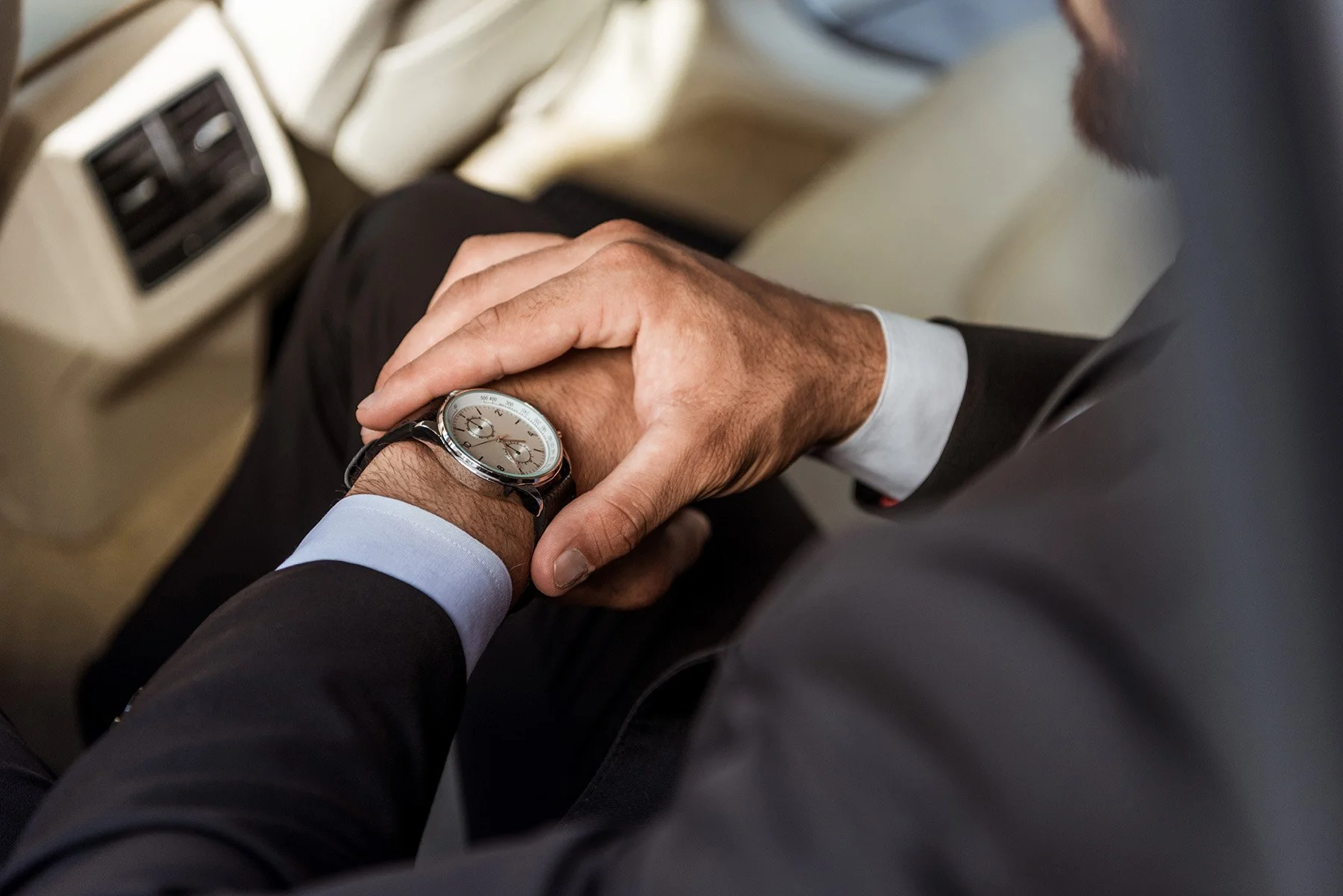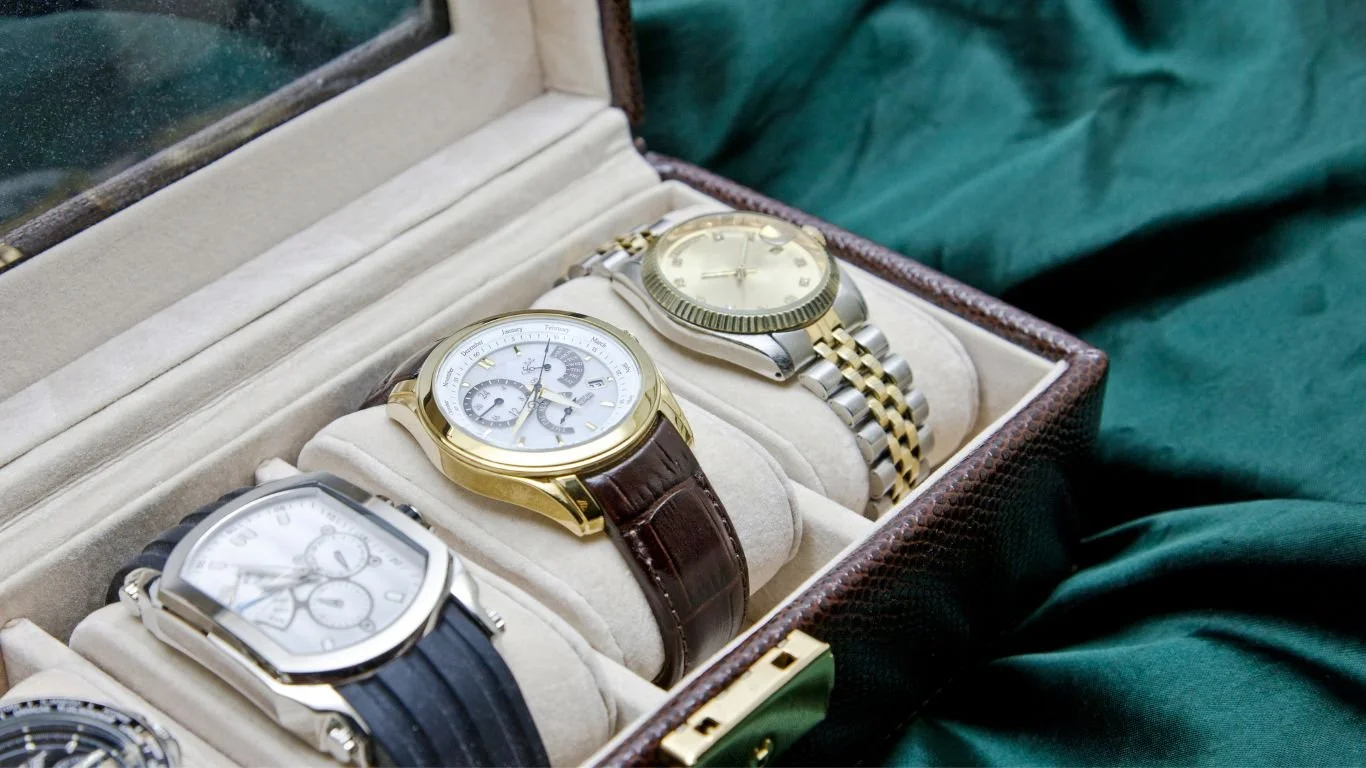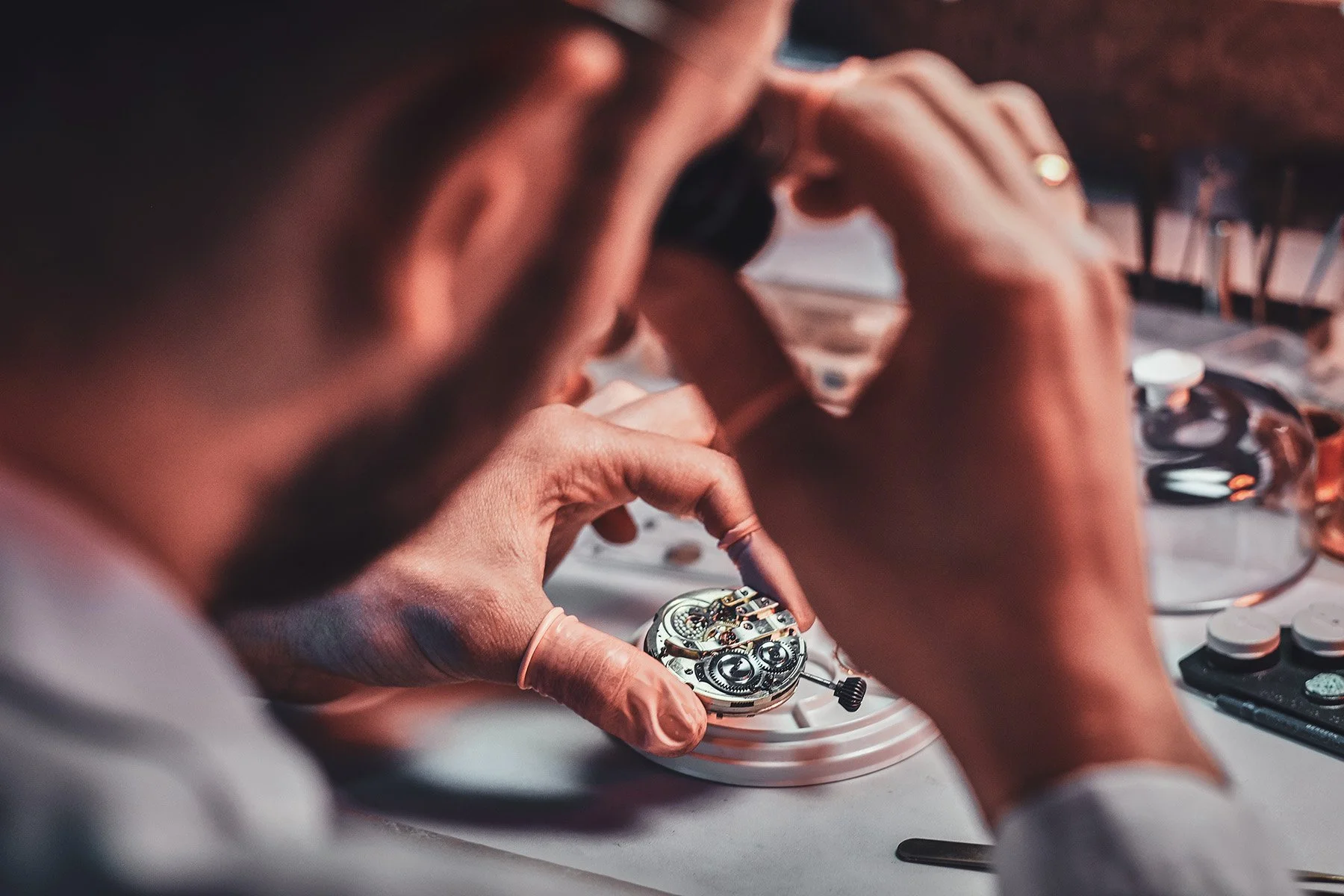What Causes a Mechanical Watch to Stop Working?
Last updated March 2025 by Huxley Mann.
Mechanical watches are marvels of engineering—intricate devices composed of hundreds of tiny components working in harmony to keep precise time. But as beautiful and complex as they are, things can (and do) go wrong, which is likely what brought you here today.
At AMJ, we’ve partnered with our watchmakers to explore some of the most common reasons mechanical watches stop working—and to offer practical tips to ensure your timepiece remains in optimal condition.
Two Types of Mechanical Watches: Automatic and Manual Wind
A mechanical watch is a sophisticated timekeeping device that measures the passage of time using an intricate system of gears, springs, and levers. Unlike quartz watches, which are powered by batteries and regulated by electronic oscillators, mechanical watches rely entirely on finely tuned movements, embodying the craftsmanship and precision of traditional watchmaking.
Manual vs. Automatic Watches
Mechanical watches come in two main types: manual and automatic.
Manual watches require hand winding using the crown. This action tightens the mainspring inside the movement. As the mainspring gradually unwinds, it releases energy that powers the gears and other components, keeping the watch running accurately.
Automatic watches, also known as self-winding watches, operate on the same basic principles as manual watches but include an additional rotor mechanism. This rotor moves with the natural motion of your wrist, automatically winding the mainspring throughout the day, eliminating the need for daily manual winding.
Why does a mechanical watch stop working?
There are several reasons a mechanical watch might stop working, and most of them come down to either wear and tear, lack of maintenance, or accidental damage. Here’s a breakdown of the most common causes:
Let’s examine each of these more closely to better understand their causes and how to avoid them.
Lack of Power (Unwound Mainspring)
While a lack of power due to an unwound mainspring won’t immediately damage a mechanical watch, leaving it unwound for extended periods can cause issues over time. Mechanical watches rely on finely applied oils to reduce friction between delicate components. When left idle, these lubricants can thicken, dry out, or become sticky, putting strain on the movement when restarted. In humid environments, a dormant watch can also be more susceptible to moisture build-up, especially if the seals are ageing, increasing the risk of corrosion in sensitive areas like the escapement or mainspring. Additionally, when a watch remains unwound, components may rest under uneven pressure, potentially leading to metal fatigue or slight misalignments.
While letting your watch sit unwound for a few days is generally harmless, allowing it to remain idle for months or years, especially without proper storage or maintenance, can lead to deterioration and costly repairs down the line.
Tip: If you rotate between watches or don’t wear your automatic watch daily, consider using a watch winder to keep it powered when not in use.
Loosened screws
Over time, the regular motion of your hands and wrist can gradually loosen the tiny screws inside a mechanical watch. These screws play a crucial role in securing key components—such as the balance wheel or pallet fork—within the movement. If they begin to loosen, these components can shift out of alignment—or, in some cases, become completely dislodged, resulting in performance issues or causing your wristwatch to stop entirely.
Dirty or dry movement
A mechanical watch movement is a finely tuned system of gears, springs, and other components that work in perfect harmony to keep accurate time. However, even the smallest amount of dust, dirt, or debris can disrupt this delicate balance. When the movement becomes dirty or dry, it compromises the lubrication between components, leading to increased friction, which can slow the watch down or cause it to stop entirely.
In such cases, the most effective solution is a professional service. The movement is disassembled, and each component is then ultrasonically cleaned in a gentle solution that effectively removes any accumulated dirt or debris. Once cleaned and thoroughly dried, precision oils are applied to the individual components to minimise friction and reduce long-term wear.
At AMJ Watch Repair, we recommend servicing your mechanical watch every 2 to 3 years to keep it running smoothly and extend its lifespan.
💡 More Watch Care Tips: Discover the telltale signs that your watch might be due for a service!
Overwinding (for Manuals)
The mainspring is the key source of power in a manual watch. When you wind the crown, the mainspring tightens, storing energy to drive the movement. If the mainspring is wound too tightly, it can exceed its breaking point and snap, rendering the watch inoperable. In addition to a broken mainspring, the tension may also cause the spring to lose its elasticity over time, reducing its ability to store energy effectively.
How do you not overwind a manual watch?
To avoid overwinding, stop winding as soon as you feel resistance in the crown. Most manual watches only require 20-30 complete rotations to wind fully, so once you feel that tension, there's no need to go further.
Damaged balance wheel
The escapement consists of several key components: the escape wheel, pallet fork, and balance wheel. Together, these parts regulate the movement of the watch's gears and hands, ensuring accurate timekeeping. However, over time, friction and wear can damage these delicate components.
As the escapement deteriorates, it loses its ability to regulate the flow of power, leading to irregular timekeeping or, in some cases, causing your watch to stop entirely.
Damaged escapement
The escapement consists of several parts: the escape wheel, pallet fork, and balance wheel. These components work together to regulate the movement of the watch's gears and hands. Unfortunately, over time, friction and other factors can wear or damage these parts.
When an escapement wears out, it can no longer provide the necessary regulation of power, resulting in irregularities in your watch's timekeeping or even stopping it from running altogether.
Impact damage
Impact damage is one of the leading causes of mechanical watch failure. Sudden shocks or impacts can harm or misalign the delicate internal components, causing your watch to stop running.
The most frequent result of impact damage is a broken mainspring, which powers the movement. This fragile component is especially vulnerable to snapping or becoming deformed when subjected to the intense tension of a sudden shock.
Watch Magnetism
Mechanical wristwatches depend on delicate components often made from ferromagnetic metals like iron, nickel, and cobalt. These metals can easily become magnetised when exposed to magnetic fields. This can distort the mainspring, causing inconsistent oscillations and irregular timekeeping, or cause the escapement to run erratically or stop altogether, for example. While magnets play an unseen yet crucial role in many everyday items, they can significantly impact your watch’s accuracy.
💡 Watch Care Tip: How to identify if your mechanical watch has become magnetised.
Water damage
Water or moisture damage can wreak havoc on a mechanical watch. When water gets inside your watch's movement, it can lead to rust or corrosion on delicate components like the gears, balance wheel, and escapement. Over time, this corrosion can cause these parts to seize up, making the watch stop altogether. Moisture can also disrupt the lubricants that keep everything running smoothly, leading to increased friction, faster wear, and potential failure of the movement. If moisture gets trapped inside, it can cause seals or gaskets to swell, misaligning parts and throwing the whole system off balance. Even if you haven't submerged your watch in water, condensation can form inside the case, causing similar damage—rust, corrosion, and disrupted lubrication.
💡 More Watch Care Tips: How to spot the early signs of water damage in your watch.
Broken Rotor (in Automatics)
The rotor, or oscillating weight, is a key component in an automatic watch, responsible for winding the mainspring that powers the timepiece.
The semi-circular rotor, embedded in the movement, swings a full 360° with your wrist's motion. This movement generates force, which is transmitted through a series of gears to wind the mainspring, which stores energy to keep the watch running.
If the rotor fails to wind the mainspring properly, your watch can stop running prematurely or erratically. A damaged rotor can also lead to unbalanced weight distribution during its rotation, putting extra stress on other components and accelerating wear and tear.
Start Your Mechanical Watch Repair
Mechanical watches are the result of meticulous engineering and craftsmanship; however, like all delicate machinery, they are susceptible to a variety of issues. From unwound mainsprings and dirty movements to damage from the odd accidental knock or water exposure, understanding the common causes of watch failure can help you prevent or address problems before they become costly repairs.
If you notice any issues with your watch, don't wait for the problem to escalate. Contact our watchmakers at AMJ Watch Repair today, and let's restore your timepiece to peak performance. Based in the heart of London's historic jewellery district, our watchmakers have decades of experience repairing and servicing a wide range of mechanical watches, from vintage to modern luxury timepieces.



